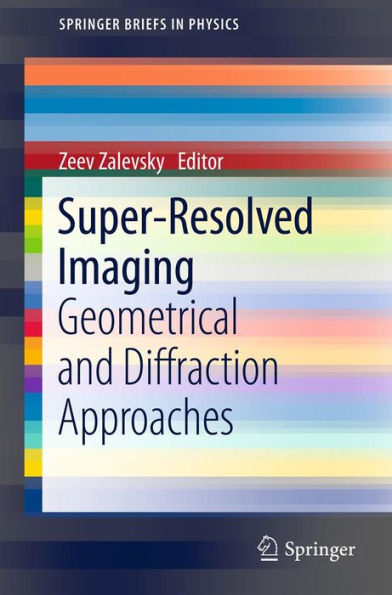Table of Contents
Preface.- Contents.- Chapter One.- 1.1 Fourier Optics.- 1.1.1 Free Space propagation: Fresnel & Fraunhofer integrals.- 1.1.2 Imaging system.- 1.2: Diffraction Resolution limitation.- 1.3: Geometrical Resolution limitation.- The effects of sampling by CCD (pixel shape & aliasing).- 1.4 Super-resolution explained by Degrees of freedom number.- 1.5 Inverse problem statement of super-resolution.- References.- Chapter 2.- 2.1 Single snap-shot double field optical zoom.- 2.1.1 Introduction.- 2.1.2 Theory.- 2.1.3. Simulation Investigation.- 2.2 Full Field of View Super-resolution Imaging based on Two Static Gratings and White Light Illumination.- 2.2.1 Introduction.- 2.2.2 Mathematical Analysis.- 2.2.3 Experimental Results.- 2.3 Super-resolution using gray level coding.- 2.3.1 Introduction.- 2.3.2 Theory.- 2.3.3 Experiment.- References.- Chapter 3.- 3.1 Geometrical Super Resolution Using Code Division Multiplexing.- 3.1.1 Introduction.- 3.1.2 Theoretical Analysis.- 3.1.3 Computer Simulations.- 3.1.4 Experimental Results.- 3.2 Diffraction Super Resolution Using Code Division Multiplexing.- 3.2.1 Introduction.- 3.2.2 Theoretical Analysis.- 3.2.3 Computer Simulations.- 3.2.4 Experimental Results.- References.- Chapter 4.- 4.1 Geometrical Super Resolved Imaging Using Non periodic Spatial Masking.- 4.1.1 Introduction.- 4.1.2 Theoretical Analysis.- 4.1.3 Experimental investigation.- 4.2 Random angular coding for super-resolved imaging.- 4.2.1 Introduction.- 4.2.2 Mathematical Derivation.- 4.2.3. Numerical Simulation of the System.- 4.2.4. Experimental results.- References.



